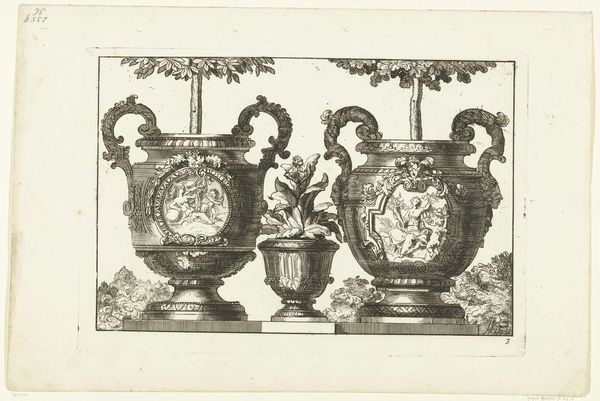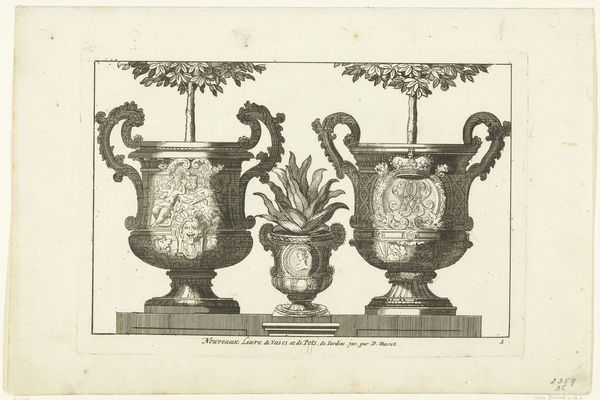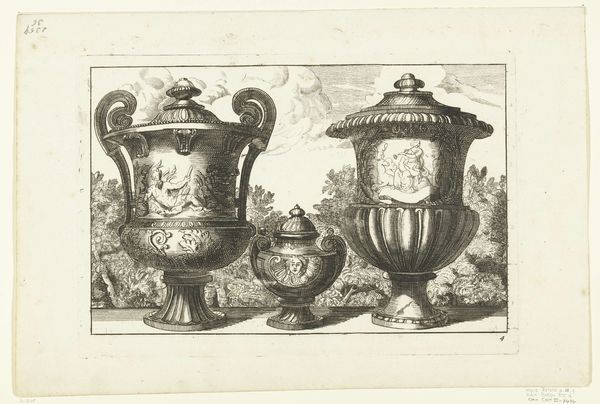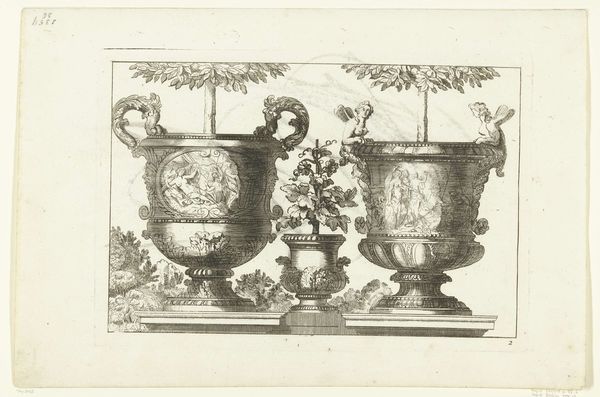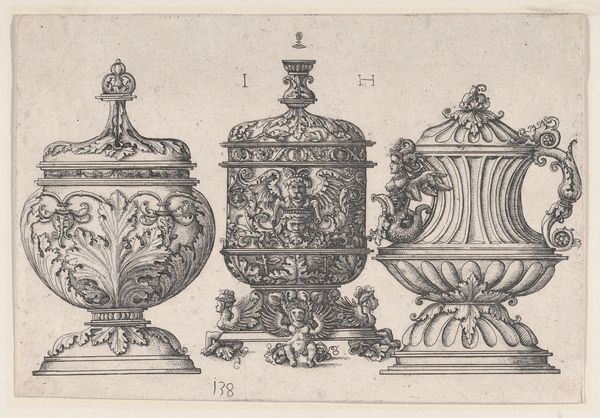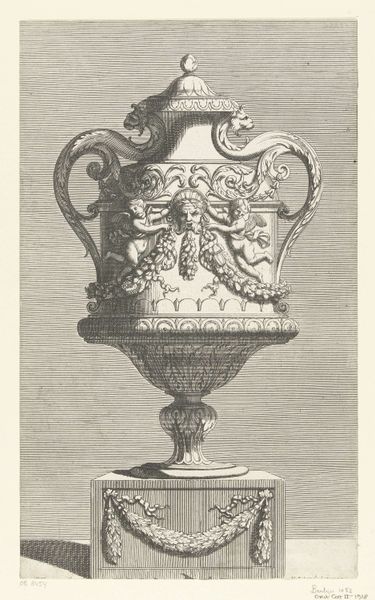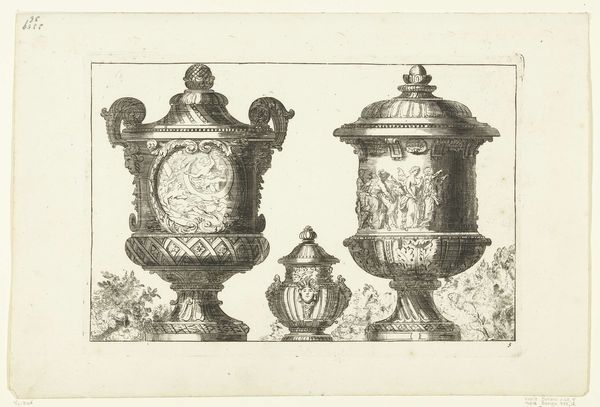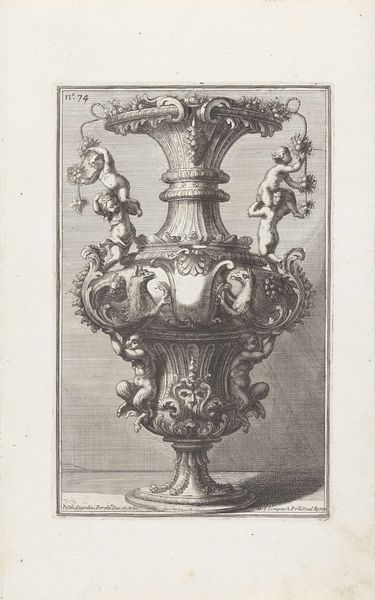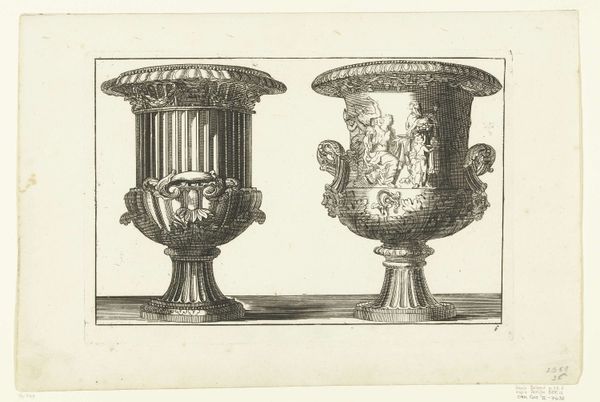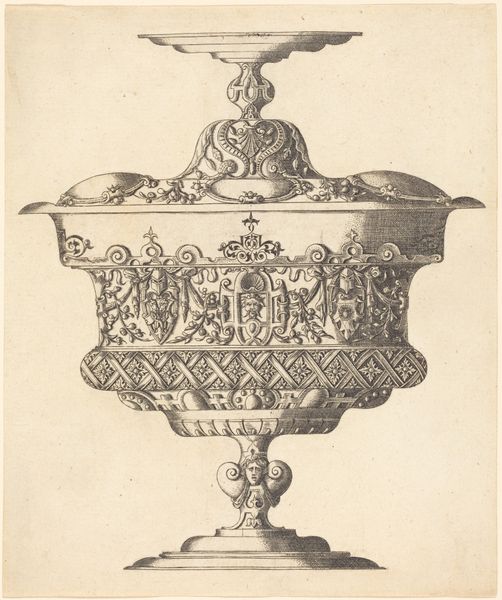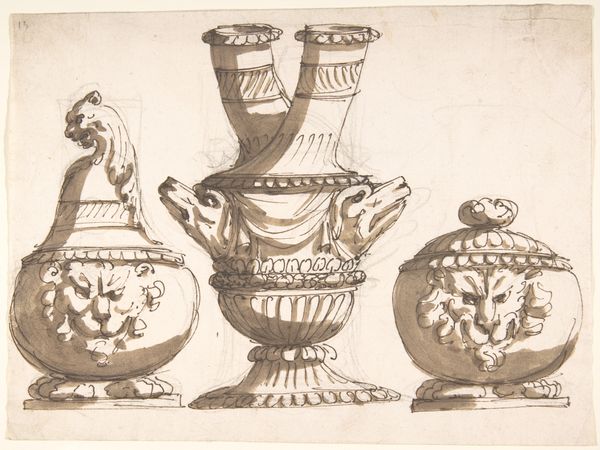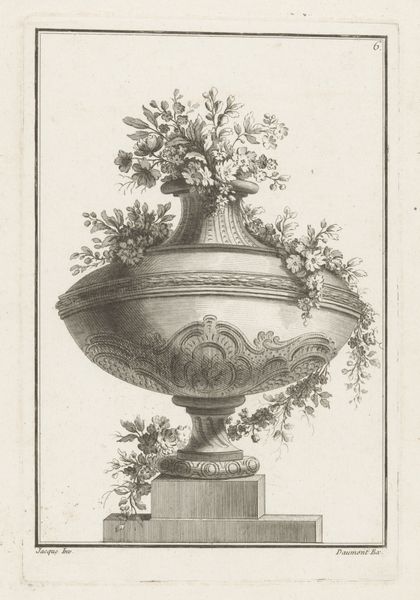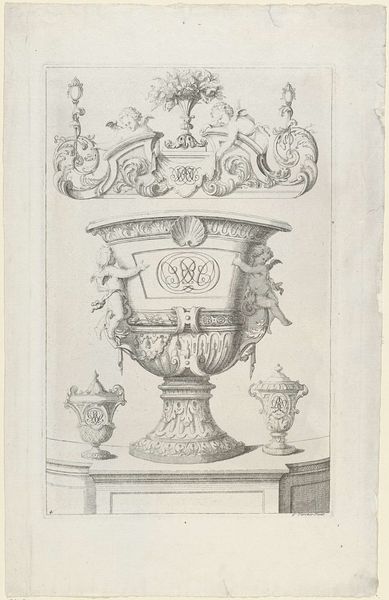
engraving
#
baroque
#
engraving
Dimensions: height 184 mm, width 272 mm
Copyright: Rijks Museum: Open Domain
Curator: Take a look at this intriguing engraving by Daniël Marot the Elder, titled "Twee grote vazen en een kleine vaas," which translates to "Two Large Vases and a Small Vase." It dates back to before 1703. Editor: Wow, ornate! I'm immediately struck by how meticulously detailed these vases are. They look like they're plucked straight from a dream garden in some royal estate. But it feels more like a fantasy of vases, not the vases themselves. Curator: Precisely. Marot was a pivotal figure in the Baroque era, particularly in decorative design. What's presented here is not simply still life. Rather, these are design drawings intended for production—showing how sculptural forms can transform spaces, inside and out. Editor: Ah, I see. It's like he's offering up ideas, inspiration for aristocratic clients looking to embellish their properties. There's this theatricality to the vases; they’re presented almost like actors on a stage. The smaller vase is cleverly set back to add depth. It's more than just decoration, it's a statement! Curator: It’s very much aligned with Baroque sensibilities—emphasizing grandeur and spectacle. Each vase is adorned with relief scenes, likely drawing from classical mythology, flanked with lion-headed handles and foliage details. They were aspirational objects and were symbols of status. Think about what the expense and knowledge would be for this level of embellishment. Editor: And what a curious setting! Trees float at the edge of vision as though they're more stage flats than real vegetation. All presented in stark monochrome. This makes me wonder how the intended client would've envisioned it. Curator: Marot aimed to inspire architects, sculptors, and garden designers with innovative patterns and motifs. The engraving facilitated a transfer of ideas from paper to three-dimensional form, which fueled an exchange of artistic vocabulary across Europe. The publication of engravings such as this one are crucial moments of media history as well as aesthetic taste. Editor: That makes me consider its modern viewers as well. Something about the precision here is lovely, from rendering technique to vision. Looking at it, I think about all the ways people communicate elegance and taste. These forms become interesting even as historical artifacts divorced from their use or context. What do you think is most enduring? Curator: Perhaps that fusion of utility and artistry. These vases serve as both functional containers and vehicles for elaborate storytelling. What is impressive is how a single image might be converted into so many possibilities.
Comments
No comments
Be the first to comment and join the conversation on the ultimate creative platform.

